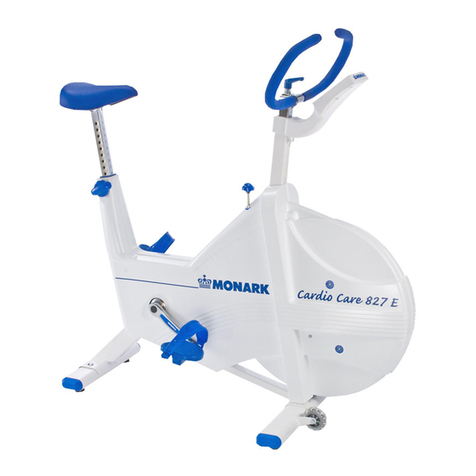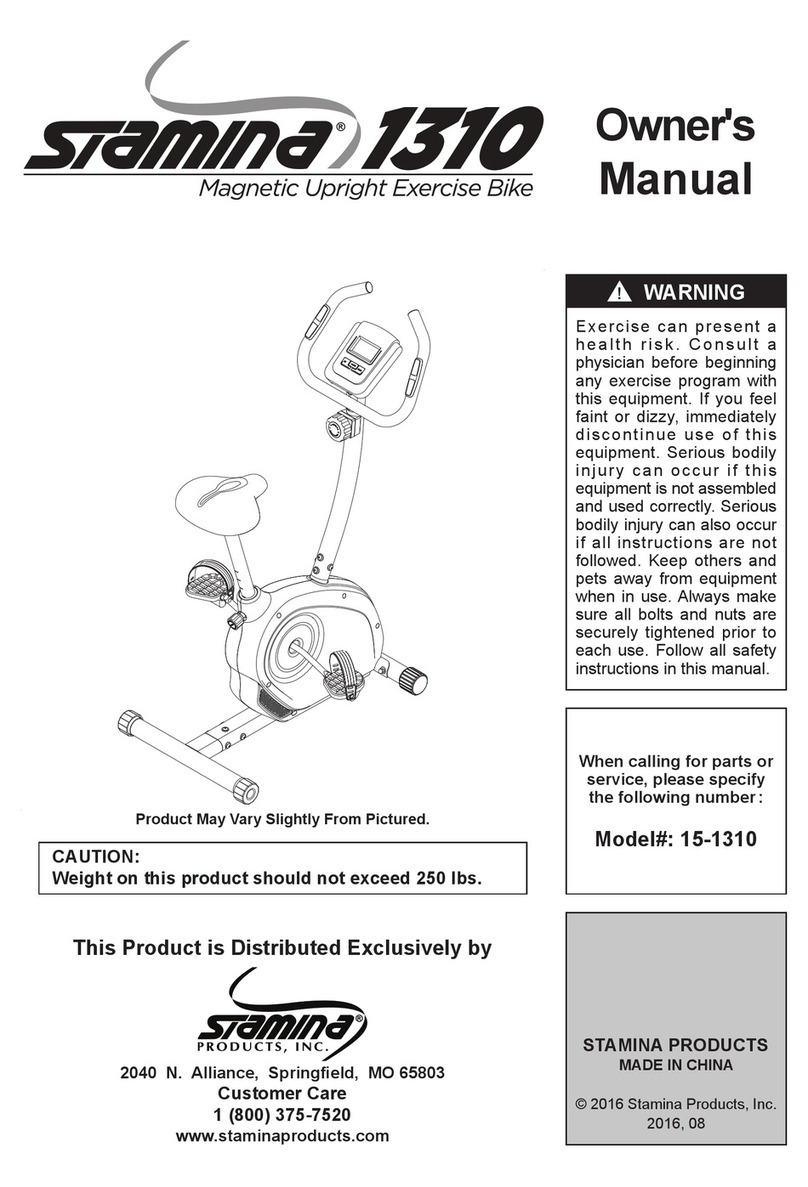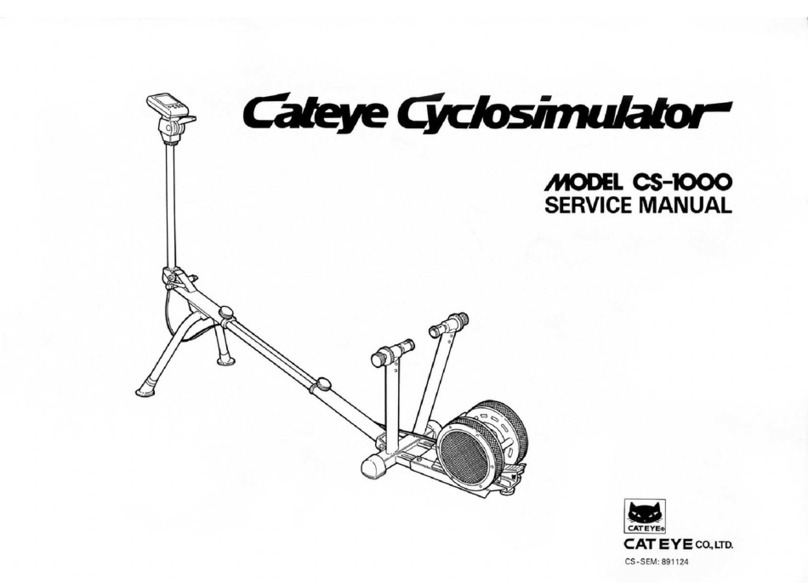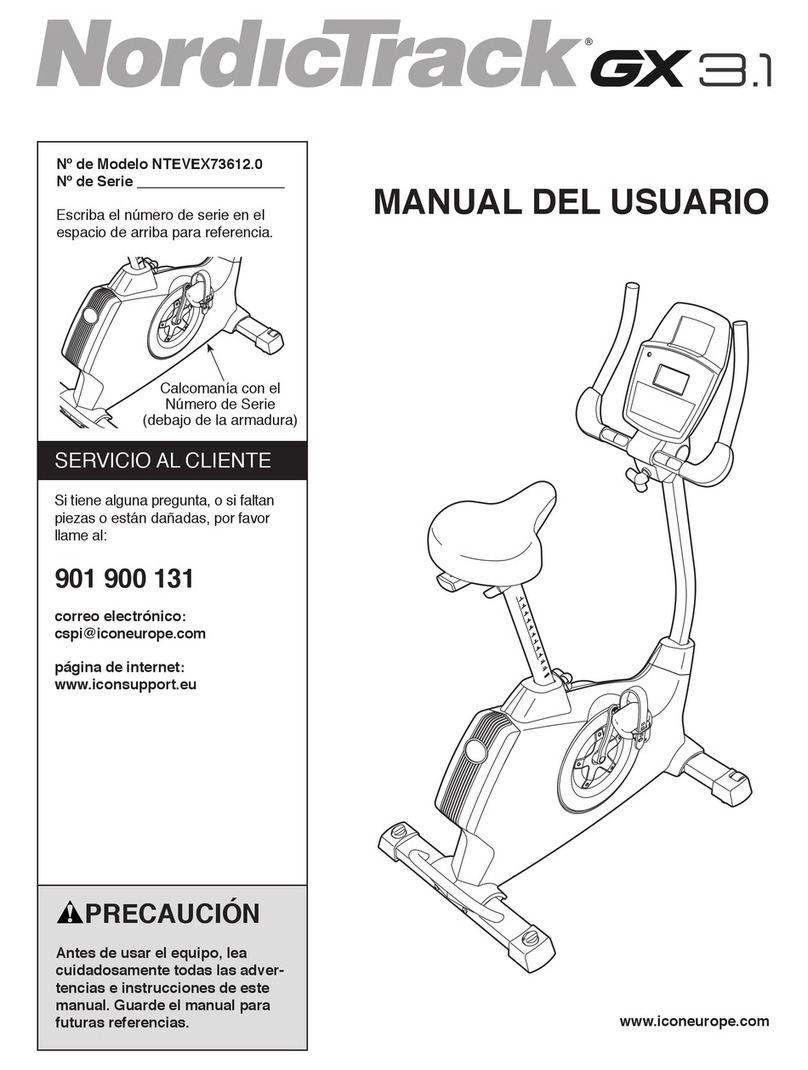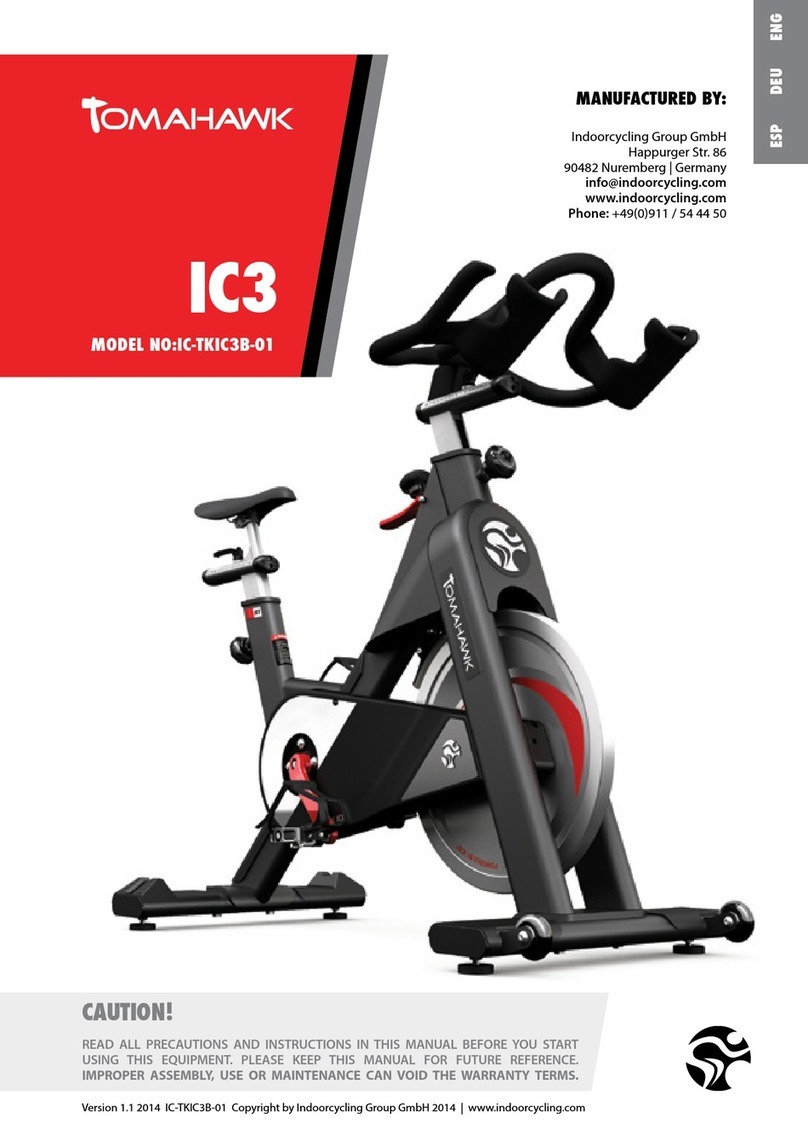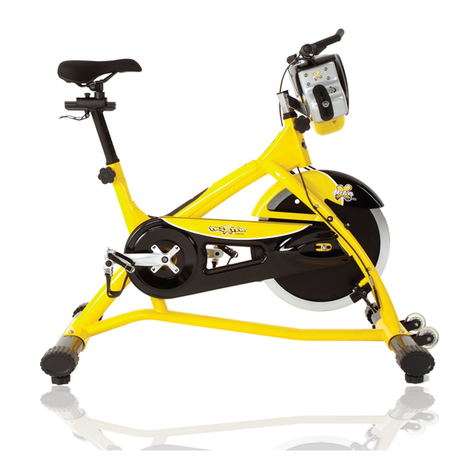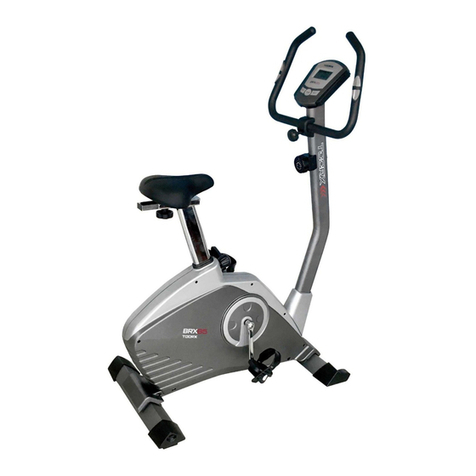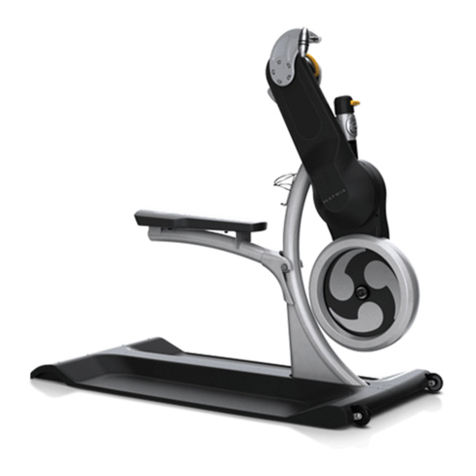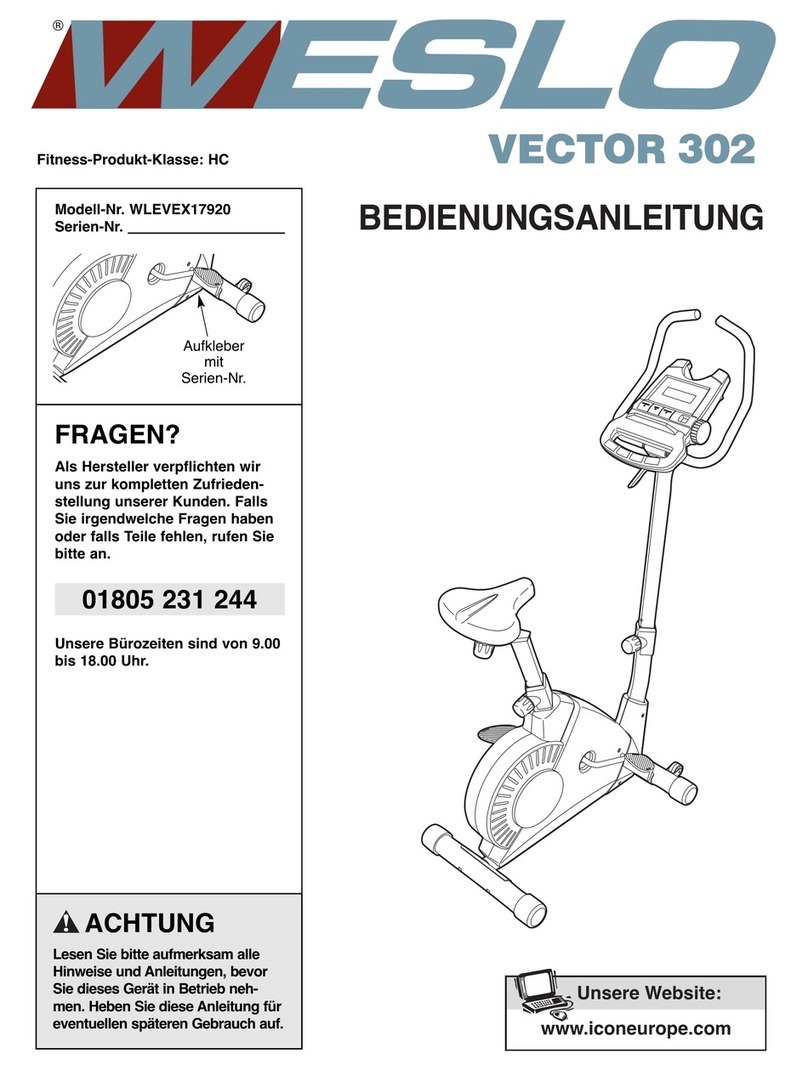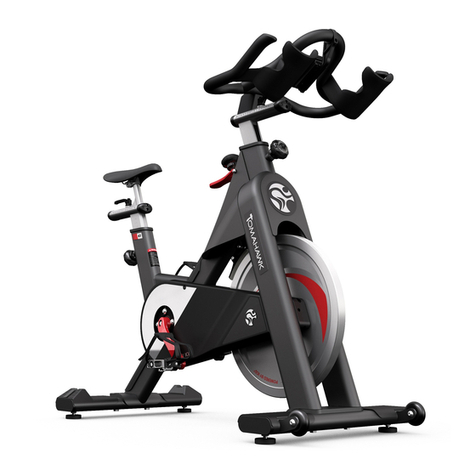
Transport Wheels . . . . . . . . . . . . . . . . . . . 29 . . . . . . . . . . . . . . . . . . . . . . 2
Leveling Feet . . . . . . . . . . . . . . . . . . . . . . . 30 . . . . . . . . . . . . . . . . . . . . . . 4
Assembly Bolts . . . . . . . . . . . . . . . . . . . . . 32 . . . . . . . . . . . . . . . . . . . . . . 4
Assembly Washers . . . . . . . . . . . . . . . . . . 33 . . . . . . . . . . . . . . . . . . . . . . 4
Assembly Nuts. . . . . . . . . . . . . . . . . . . . . . 34 . . . . . . . . . . . . . . . . . . . . . . 4
Resistance Pad. . . . . . . . . . . . . . . . . . . . . . 37 . . . . . . . . . . . . . . . . . . . . . . 1
Adjustment Handle Washers . . . . . . . . . . 54 . . . . . . . . . . . . . . . . . . . . . . 2
Toe Clips. . . . . . . . . . . . . . . . . . . . . . . . . . . 63 . . . . . . . . . . . . . . . . . . . . . . 2
Toe Straps . . . . . . . . . . . . . . . . . . . . . . . . . 64 . . . . . . . . . . . . . . . . . . . . . . 2
Cleat Hardware . . . . . . . . . . . . . . . . . . . . . 65 . . . . . . . . . . . . . . . . . . . . . . 1 set
II. Assembly
Your Travel Trac™ClubCycle exercise bike has been packed in two cartons.
1. Move the boxes to the desired location and ensure they are standing upright.
Open both boxes, remove the bike and other contents from the boxes and
dispose of packing material.
2. Use the assembly bolts (32), washers (33) and nuts (34) to attach first the rear
(3) and then the front (2) base tubes to the main frame as shown in Figure 1. The
wheels (29) on the front base tube should face forward (away from the bike).
3. Place the handlebar (4) on top of the handlebar post (5) as shown in Figure 1,
making sure that the thin plastic shim on the underside of the handlebar is in
place. Thread the adjustment handle (9b) with washer (54) into the hole on the
underside of the handlebar and tighten securely by turning it clockwise.
Note: The adjustment handle is spring loaded. If the handle strikes the handlebar
post while tightening it, pull on the handle and rotate it to a different position.
4. Slide the seat (8) onto the seat slider post (7) as shown in Figure 1. Point the nose
of the seat forward and tighten the seat bracket nuts securely (see Figure 2).
5. Install the pedals (see Figure 1). The left and right pedals are marked with “L”
and “R”. The right pedal (14) tightens in a clockwise direction. The left pedal (13)
is reverse threaded and tightens in a counter clockwise direction. Apply a small
amount of grease to the pedal axle threads before installation to simplify removal
in the future. Use the provided wrench tool to tighten both pedals securely.
6. If desired, a water bottle cage can be attached to each fork blade.
III. Adjustment and Setup
Moving your ClubCycle
If you didn’t assemble your ClubCycle in the location you plan to use it, you’ll need
to move it before beginning your first workout.
Make sure that the handlebar is securely attached to the bike and that the handlebar
adjustment handles (9a and 9b) are tightened securely. Standing in front of the
bike, grasp the ends of the handlebar. Place one foot on the front base tube (2) and
tilt the bike toward you until the transport wheels (29) are touching the floor (see
Figure 3). Roll the bike to the desired location and set the rear of the bike back down
on the floor slowly and carefully.
Leveling the Unit
The ClubCycle can be leveled to compensate for uneven floor surfaces. To level the
bike, raise or lower the four leveling feet (30) located on the underside of the front
and rear base tubes.
Seat Adjustment
Proper seat position helps ensure maximum exercise efficiency and comfort, while
reducing the risk of injury. To raise or lower the saddle and move it forward or
backward, follow the steps below.
Seat Height
1. To determine proper seat height, sit on the ClubCycle in your normal exercise
clothing and shoes. Rotate the pedals so that one is at the 12 o’clock position and
the other is at the 6 o’clock position (see Figure 4).
2. Place your feet on the pedals with the ball of each foot over the center of each
pedal. In this position, your extended leg should be slightly bent at the knee (see
Figure 4).
3
2
4
3
08_TravelTrac_ClubCycle_INS.indd4 4 7/3/08 2:20:08 PM

